I’ve learned a lot from teaching, and one of the most curious things I’ve observed is how, even though students have committed to taking a class for a few weeks or months, it still can be difficult for them to allow themselves to try something new in that class – even when they’ve signed up in order to do just that. It’s curious to me because I’ve always been on the opposite side of the coin with the belief that because it’s a learning experience, there is room to try more things.
Especially in a facilitating environment (such as a painting class), you want to be open to the possibility of failure. The notion of expecting perfection on the first attempt or just fast results that come with ease is not something that’s particularly challenging. Learning wasn’t supposed to be easy. It requires effort and self-motivation, and your overall experience will be fuller because of it. When trying something new/different and it feels uncomfortable, that’s when you’re tapping into something that has the potential to be so many things. The possibilities are endless, as they say, and that’s really an amazing place to be.
Learning is a form of personal change. To push back against learning something new because it’s difficult speaks volumes about your own artificial mental boundaries, and honestly is just stifling your own growth. To stop when things become challenging is giving up, and knowing you gave up puts a huge amount of guilt on yourself eventually. There’s an emotional investment that might feel difficult, but the satisfaction of accepting the challenge and pushing through is tenfold.
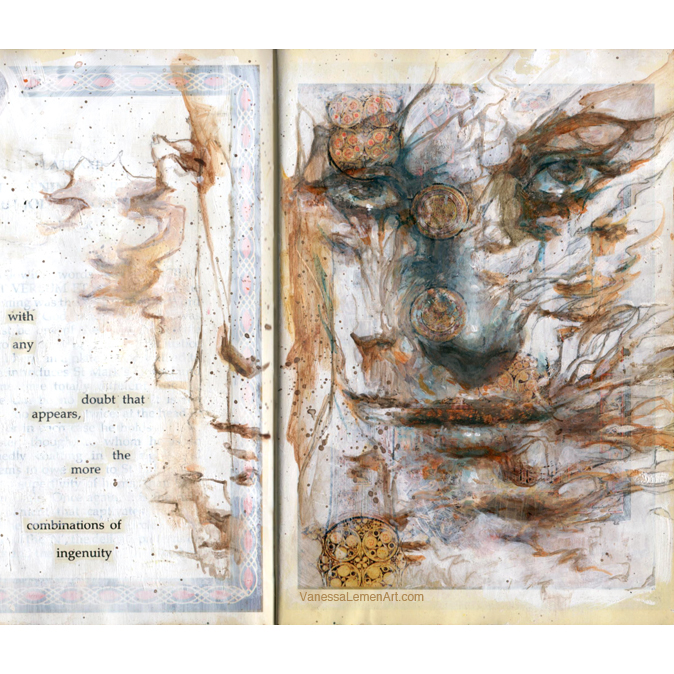 |
| Try using doubt as a means of inspiration or ingenuity! |
I’ve had students tell me that they’re surprised at how slow and awkward they are in class, because at home when they work on their own projects, they’re much faster and things come much easier. Basically, what they’re doing is making a class-wide announcement that they are, in fact, “better” than what their class project would lead us all to believe. As if to say “Hey, everybody! I’m really not this bad!” This way of thinking is not productive, and is very limiting.
Projecting expectations of perfection onto your learning experience and onto your creative project can be a tremendous hindrance to your project’s outcome and your overall well-being. The following are a few ways to think about getting out that will help to break through those productivity barriers.
Getting out of your comfort zone
You have to be willing to swim upstream. That is, to not only be willing to take risks, but to know that it might not be particularly easy when you do. In fact, I highly suggest doing what doesn’t come naturally. You’ll find that you will gain control by allowing yourself to be out of control.
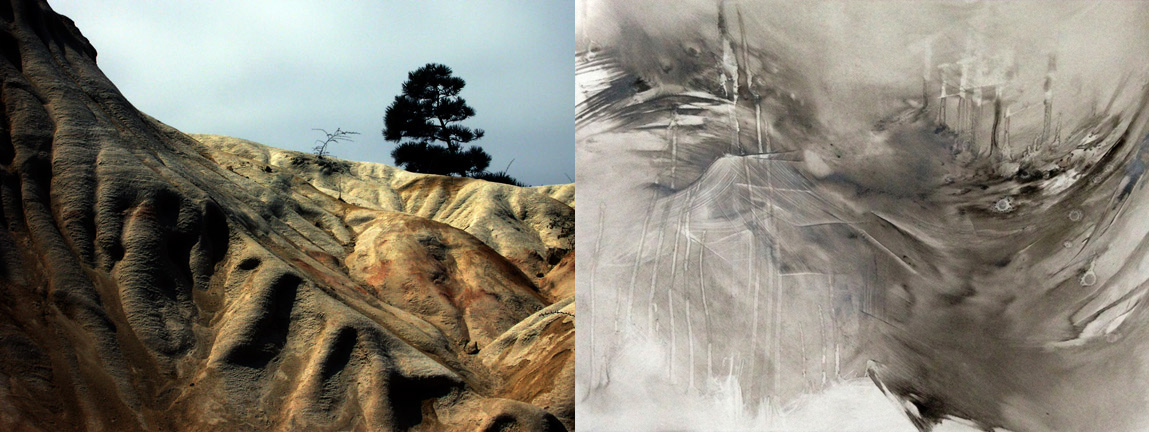 |
| The landscapes I see on a regular basis in my everyday surroundings definitely inform my painting and mark-making |
Let go of perfection and invite randomness. This will help you to move beyond the everyday patterns and habits that you’ve formed. By doing so, you develop a method or strategy that allows for a reactive nature to the process that you are developing, and this may even eventually become a part of the process. Be open to trial and error, and be able to recognize a mistake as an opportunity to learn from it – either in order to avoid it next time, or to incorporate it in a productive way. Some ways to allow for this when creating art would be to try using new tools or new surfaces, or to try taking on new and unfamiliar subject matter. Create a way to force yourself to see and do things differently.
If you brainstorm to get ideas, when you do this, don’t edit – just put it all in there. There shouldn’t be any limits in the brainstorming stage. You can always edit later, but you might find that the ideas that seemed less feasible could make for the most interesting problems to solve creatively, even if for a different project than the one that you’re brainstorming for. Overall, question things, be curious, and even be skeptical too. Find different ways to get answers or results. Take risks, and accept and embrace them as well.
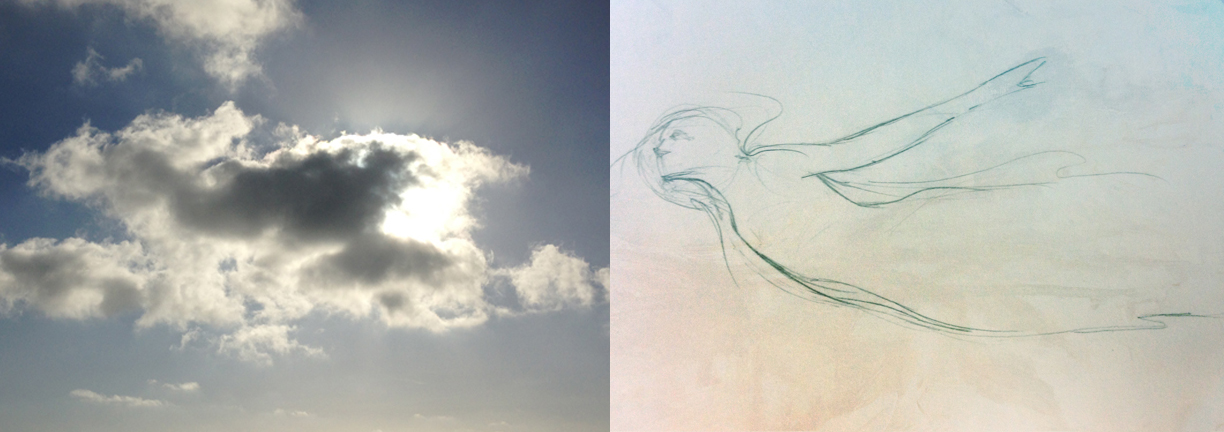 |
| Was out sketching the other day, inspired by the clouds. This cloud looked like a woman flying |
Thinking outside the box
Try not to limit yourself by wanting to do what others are doing or what others think you should do. Be patient and have perspective – even if it means taking on a different perspective than what you might be accustomed to in order to feel as if it’s new to you, and in order to know what your perspective is (or isn’t). To allow for this, you have to be present and open. This may require you to slow down, even be quiet, in order to really be able to pay attention and see what’s there. And seeing what’s there doesn’t mean you have to agree with it or understand it. Just observe. That’s when you will know what truly is ‘outside the box’ for you.
And on the flip side, in addition to slowing down, you can also be more spontaneous, throwing yourself into a situation last-minute is a great way to find out what you do and don’t know, and how you’d react in the moment with that awareness that you quite possibly didn’t know you had unless you had done that spontaneous act. Through spontaneity, you can learn what you are truly capable of doing and creating.
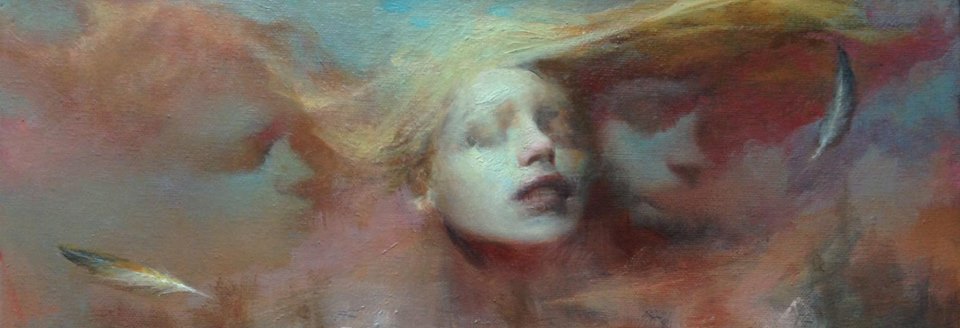 |
| This is the top portion of a WIP, inspired by cloudy sunsets |
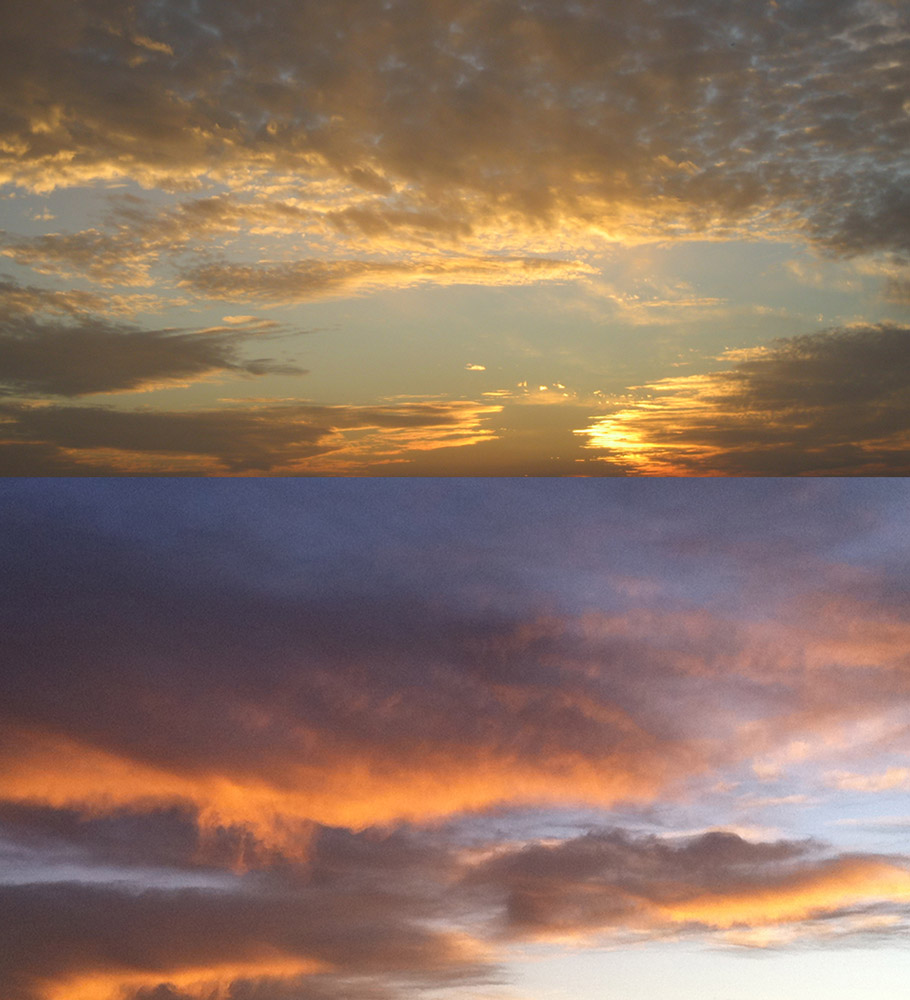 |
| I get a lot of inspiration from sunset colors and shapes of clouds too |
Getting outdoors
This doesn’t necessarily mean you have to go somewhere you’re not familiar with, but that’s definitely a good idea. Just at least get out of the house/office/studio, and for sure get out of your chair! Getting outdoors can bring clarity and can revitalize your thought process. Just by going for a walk or sitting underneath a tree for a bit, you will feel refreshed and might just gain that jumpstart that you needed to dive in to that big project you’ve got looming, or bring a nice burst of energy while you’re in the midst of an ongoing project.
When you go outdoors , you might think to bring a journal and plan an outing with a goal to go on a short adventure each day, even if it’s just for a half hour’s time. Try doing a compare and contrast note-taking and sketching exercise. For example, go somewhere familiar and observe what’s in your surroundings, then go somewhere new and observe what’s there. What are the similarities/differences? How do you feel when you’re in each place? What is happening around you? What do you hear? What colors are there? Look at things abstractly. What kinds of different characters do those objects or surroundings take on when you blur your vision or squint to see big shapes? Like finding a dragon in the cloud shapes, what do you see in other objects and surrounding elements? You will get to know a lot about your own temperament and personal perspective by allowing yourself to get out, even if just for a small bit of time each day, and to observe.
So.. Go. Get out. And get IT out.
Let go of perfection. Be open. Be authentic.
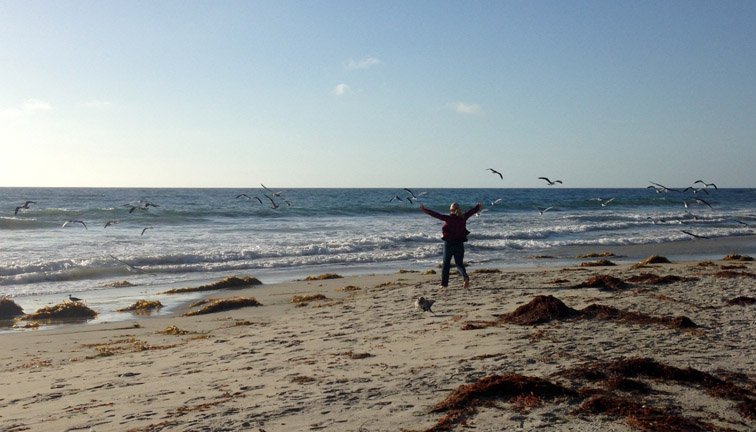 |
| Get out! 😀 |


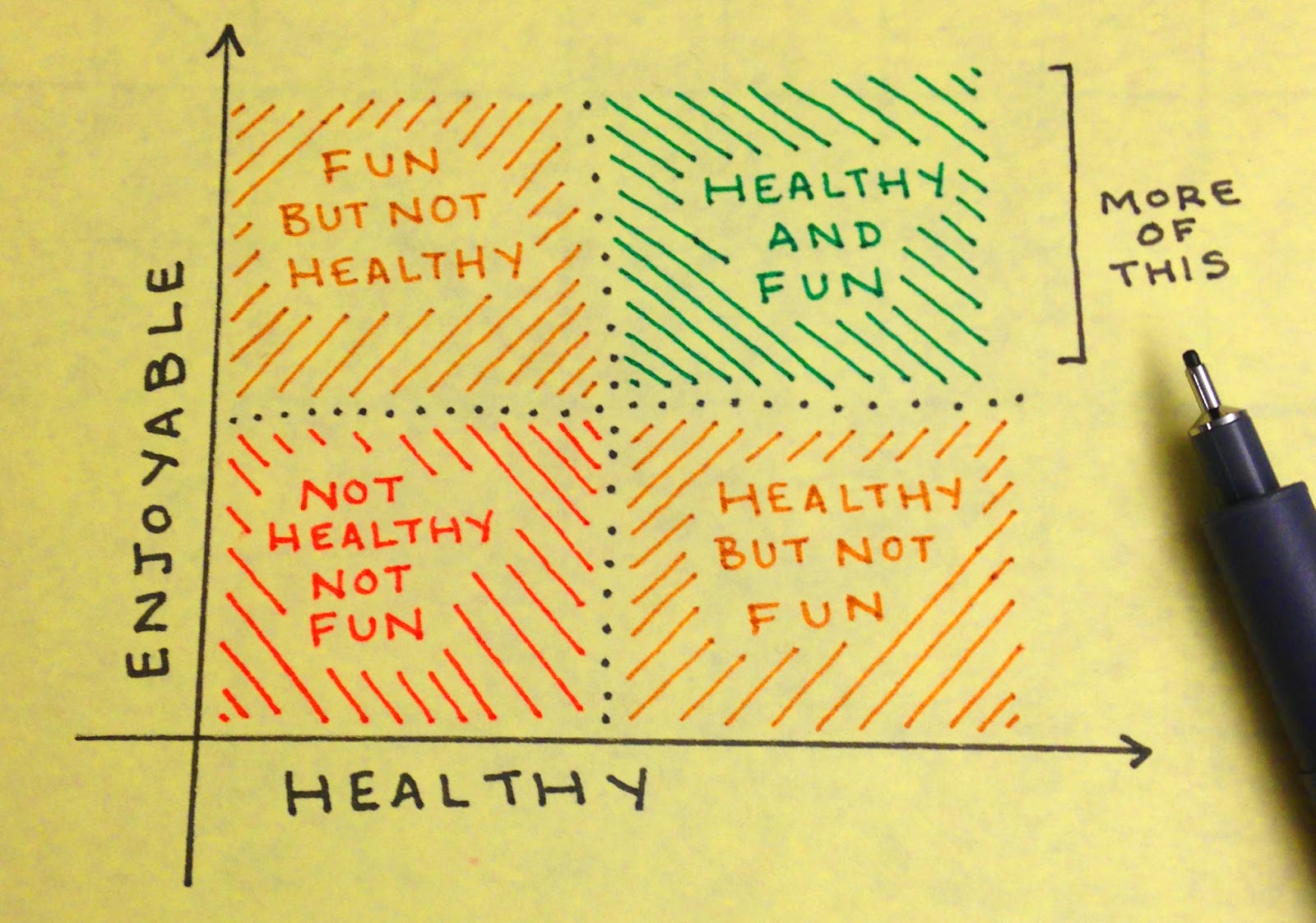
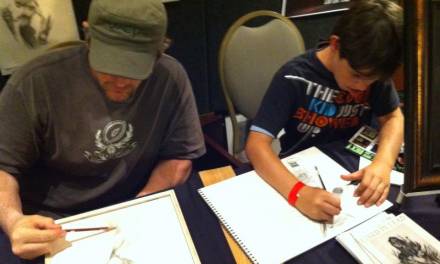
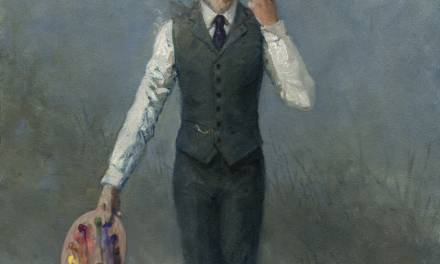

Beautiful words Vanessa. Keep inspiring us!
Good advice and valuable perspectives.
Great article Vanessa. Im really glad that you and Ron started posting here!
This is very motivating – thanks!
Great advice for artists.
I also recommend “getting an emotional sense” of a particular thing before attempting to render it, at least whenever possible.
Say you want to paint a river with mist and tons of fallen logs and grass and trees, sure, you could look up reference photos online in a second, but you can't get a “feel” for the emotional resonance of place and time unless you GO there, feel the mist, smell the rotting mud and the tall grass.
The same goes for a train yard, or a factory district, or a forest, they all have sights and sounds and smells to them that add to the “feel” of the place, a certain character that can never be experienced through photographs alone.
So, Get Out indeed.
I too believe that artists in particular should do this whenever possible.
Thank you! Glad you liked the post, and that it's inspiring! 🙂
Thanks Walt. 🙂
Thank you! Glad to be here!
So glad to hear. You're welcome, and thank you!
yep, definitely. The internet is an amazingly never-ending reference finder.. but the real thing – if and whenever possible – is always the best. To experience it in the moment adds that element that isn't there when searching online for it. Cheers to Getting Out! 😀
“Overall, question things, be curious, and even be skeptical too. Find different ways to get answers or results. Take risks, and accept and embrace them as well.”
I completely agree with that. My experiences have shown me that each professional artist don't have standardization in what they do, that is each may have a different preference towards techniques and setup. So, it's also a question of when emulation stops and your own tendencies begin?